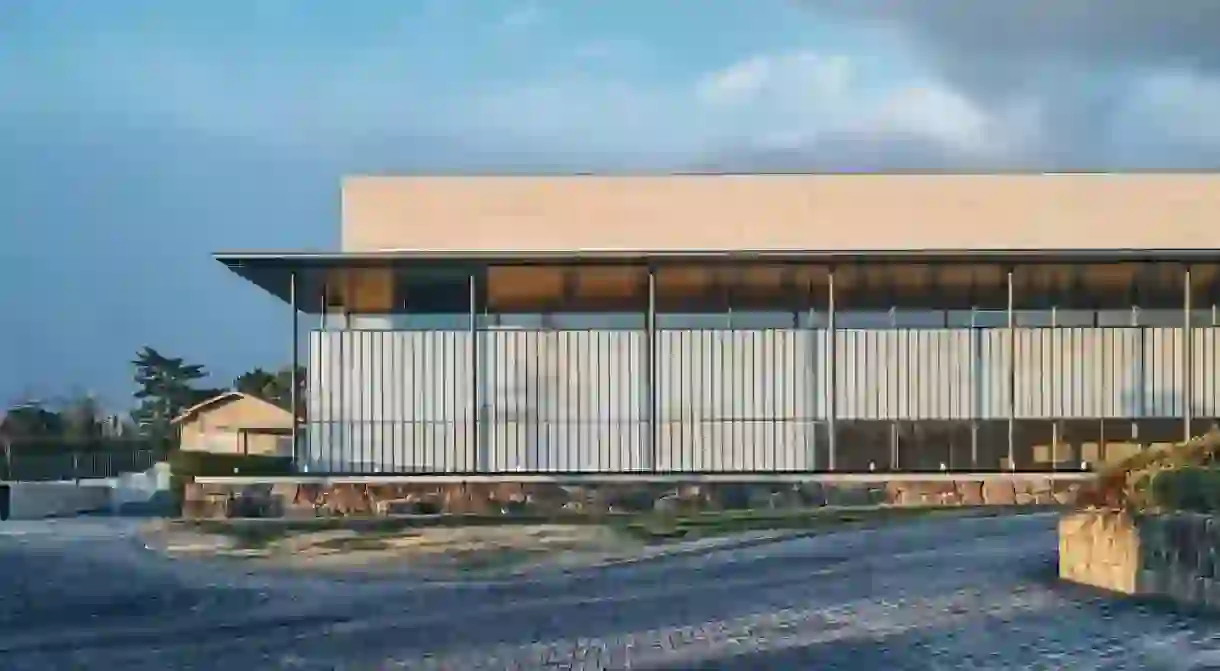An Insider’s Guide to the Best Museums in Kyoto

Discover woodblock ukiyo-e prints housed in a studio that rarely opens to the public, learn about the history of Japan’s second-largest liquor brewery or take part in a manga workshop at the best museums in Kyoto.
As the country’s imperial capital for over 1,000 years, Kyoto has played a significant role in the progress of Japanese culture. Best known for its shrines and temples, the city also has many museums dedicated to history, arts, crafts and much more.
If you’re planning to visit multiple museums during your stay, consider buying the Kansai Grutto Pass for ¥1,100 (£6), which provides free or heavily discounted admission to over 100 museums and galleries in the Kansai region. You can buy one every month except during February and March. The pass expires three months from its first use.
Gekkeikan Okura Sake Museum
Bar, Japanese

Take in the history of Japan’s second-largest liquor brewery. Only a stone’s throw from Fushimi Inari Shrine in the country’s liquor-brewing capital of Fushimi, the brewery was opened by the Gekkeikan Sake Company in 1909. Discover the history of traditional tools and methods of sake-making with 400 sake production materials displayed (limited information is available in English-language leaflets). Be transported back to the old brewery days, with the traditional chants of sake makers echoing throughout the museum. All visitors who have paid the ¥600 (£3) entry receive a free sake tasting or postcard at the end of the visit.
The National Museum of Modern Art
Building, Museum

Kyoto National Museum
Museum

The Museum of Kyoto
Museum
Formally the Kyoto branch of the Bank of Japan, The Museum of Kyoto is housed within a compelling red-brick building and details the city’s rich history. Wander the first section of the museum, home to reconstructed Edo-period cafés and shops. In the second section, admire paintings by Western and Japanese artists, beautiful Kyoto dolls known as kyo-ningyo and a hall for films about Kyoto with English subtitles. The museum hosts a range of fascinating exhibitions, covering both Japanese and international themes. Admission is ¥700 (£4).
Kyoto International Manga Museum
Museum
Kyoto Seishu Netsuke Art Museum
Museum
Popularised during the Edo period, netsukes (miniature sculptures) were originally to prevent people’s personal belongings, including their inro (medicine box), yatate (writing set), tobacco and pouches, from being stolen. These small but exquisitely crafted artworks would hang from kimono belts and were made from an array of materials including animal bones, wood, ceramic and metals. As soon as Japan opened to the West during the Meiji era, netsukes became the ultimate fashion statement, with some collectors paying the price of a house in exchange for a rare one. Now you can gaze upon the collection of 400 antique and contemporary netsukes at the former home of the Kanzaki family, the only surviving samurai residence in Kyoto and a Tangible Cultural Property in Japan. Take a moment to appreciate the byobu folding screens, garden and polearms once used to defend the premise. Admission is ¥1,000 (£5).
Kyoto Railway Museum
Museum

Spanning across three floors in a 30,000-square-metre (322,900-square-foot) building, the Kyoto Railway Museum offers visitors the opportunity to experience Japan’s steps towards transport innovation, exhibiting 53 retired trains, from steam locomotives to more modern electric trains and the high-speed Shinkansen. This family-friendly museum showcases railway uniforms, offers interactive exhibitions where visitors can perform the duties of a train conductor and flaunts one of Japan’s largest dioramas – miniature trains controlled by a skilled operator. English explanations are limited, so opt for the English audio tour guide at the start. Admission is ¥1,500 (£8). All aboard!
Kyoto Museum of Traditional Crafts
Museum
Kyoto has been at the centre of traditional Japanese crafts for over 1,000 years. Learn about the time-honoured techniques and materials used in the museum’s permanent exhibition, which showcases 74 categories of industries that blossomed in Kyoto. From umbrella making, kyo-yaki (Kyoto pottery), nishijin-ori (silk weaving) and kyo-yuzen (silk dyeing) of kimonos and kyo-sensu (folding fans), to name a few. You can even watch how Japanese candles, lacquerware and family crest paintings are made by skilled artisans during the craft demonstrations. Or be captivated by the maiko (apprentice geisha) and geiko (geisha) performances. Admission is ¥500 (£3)













